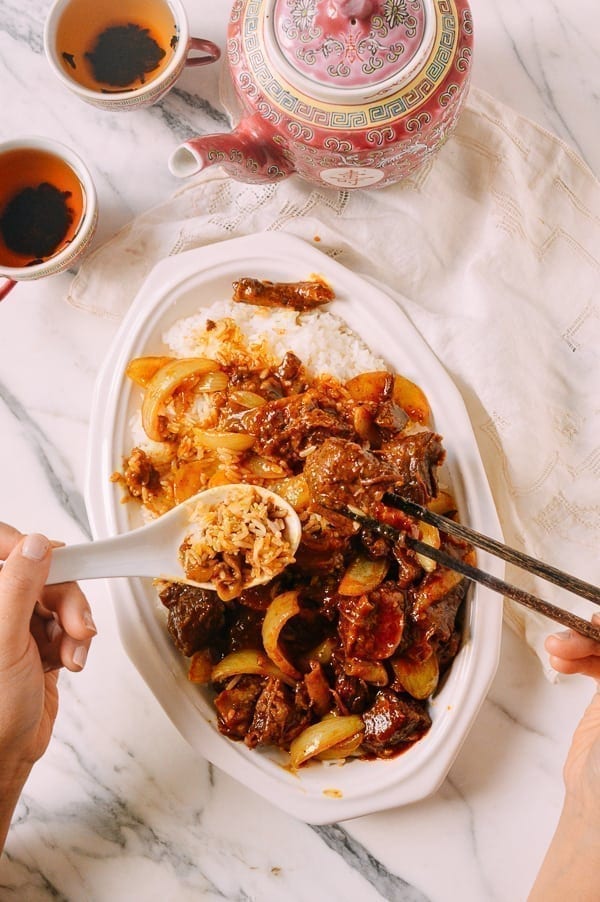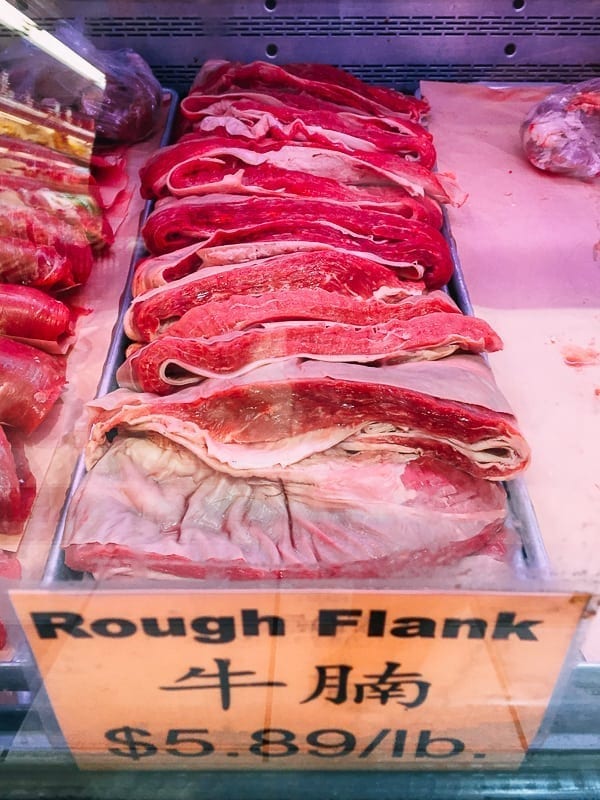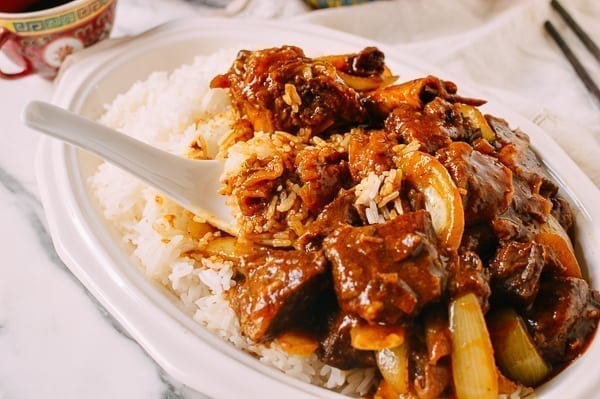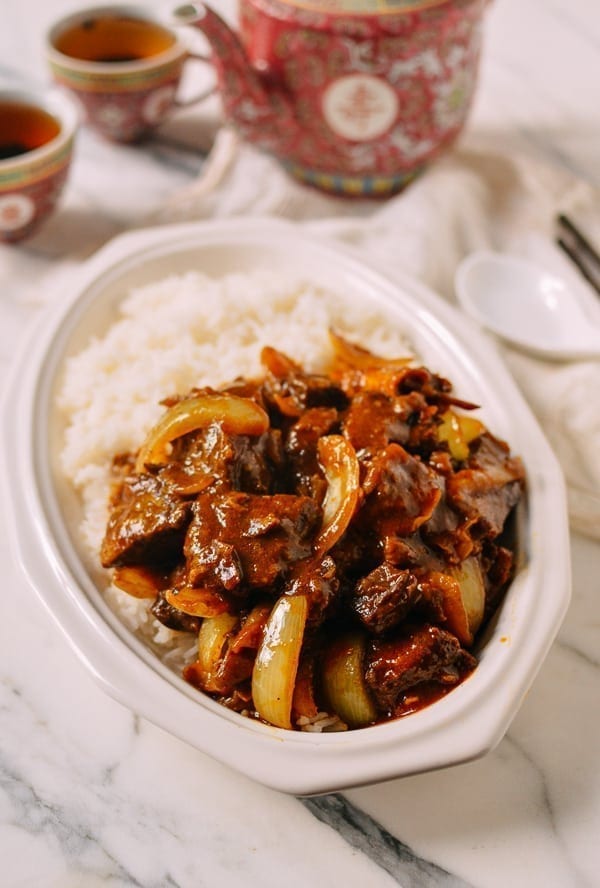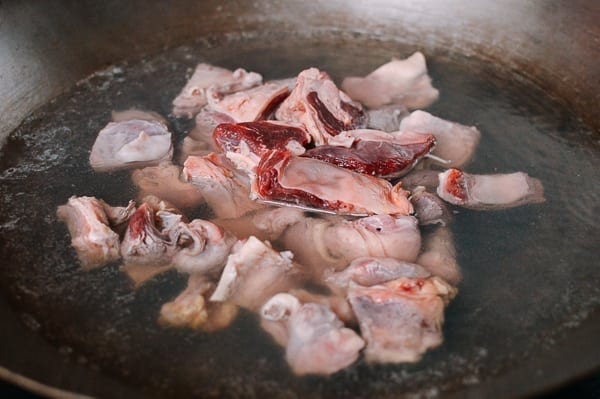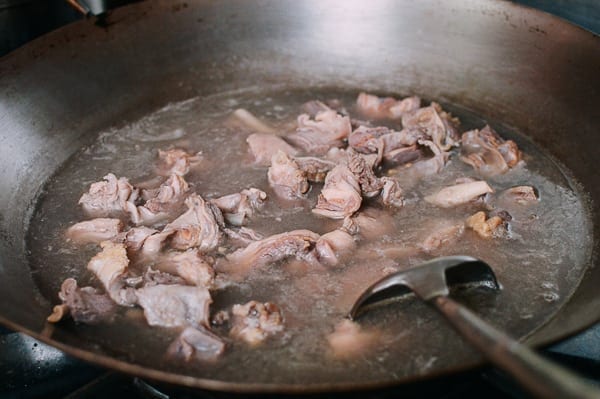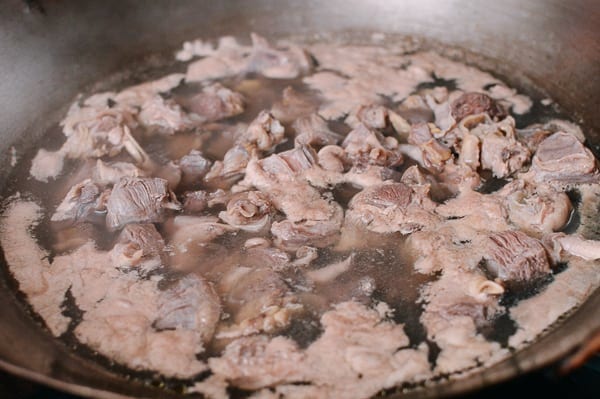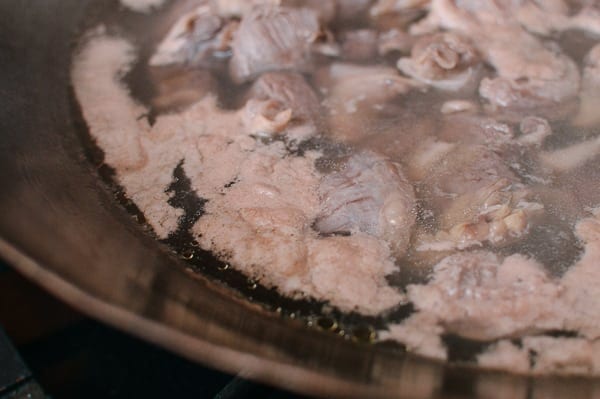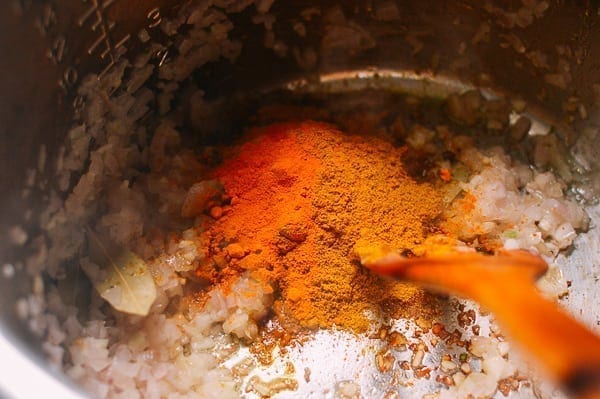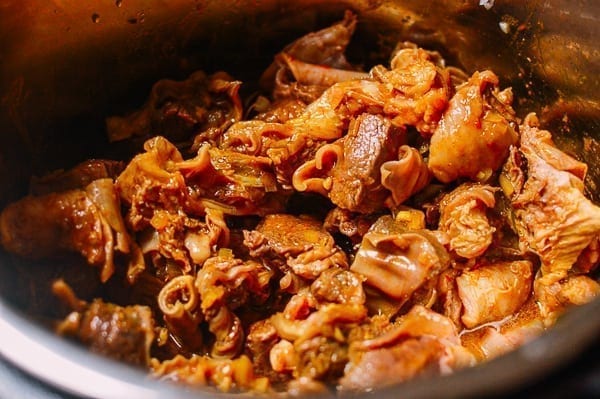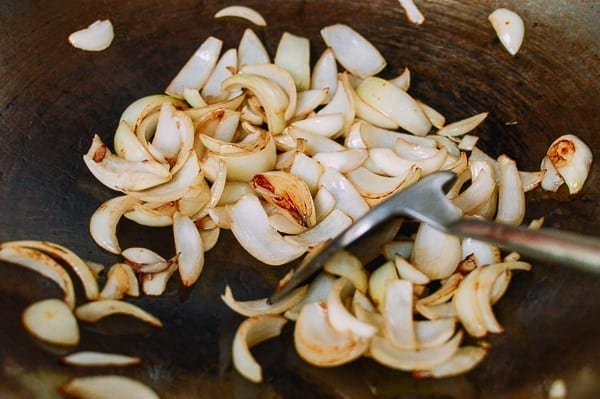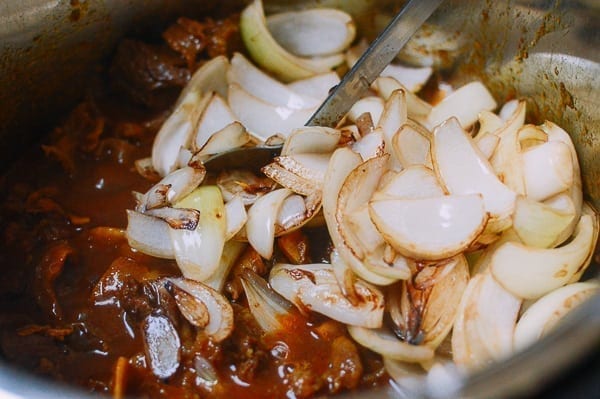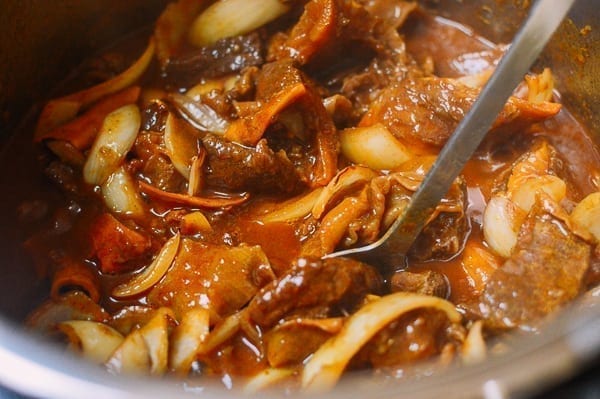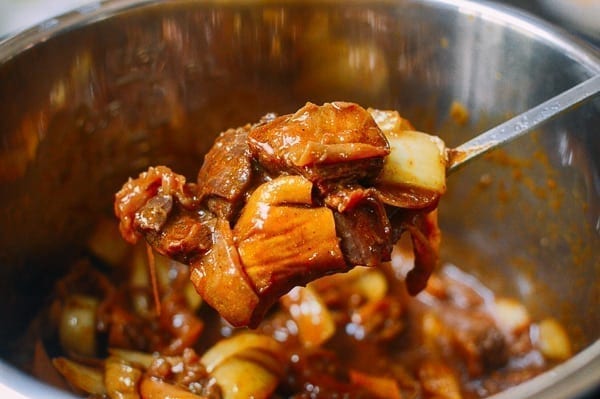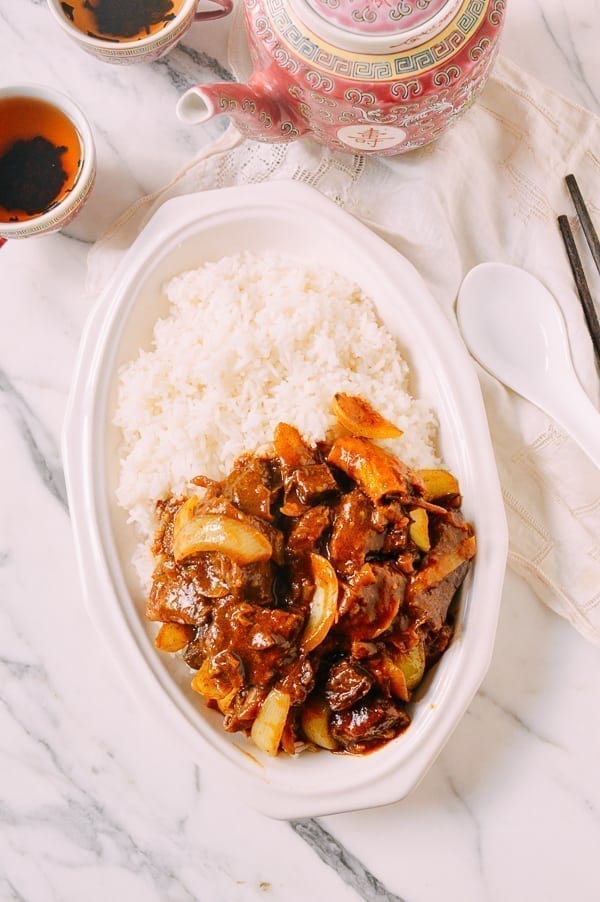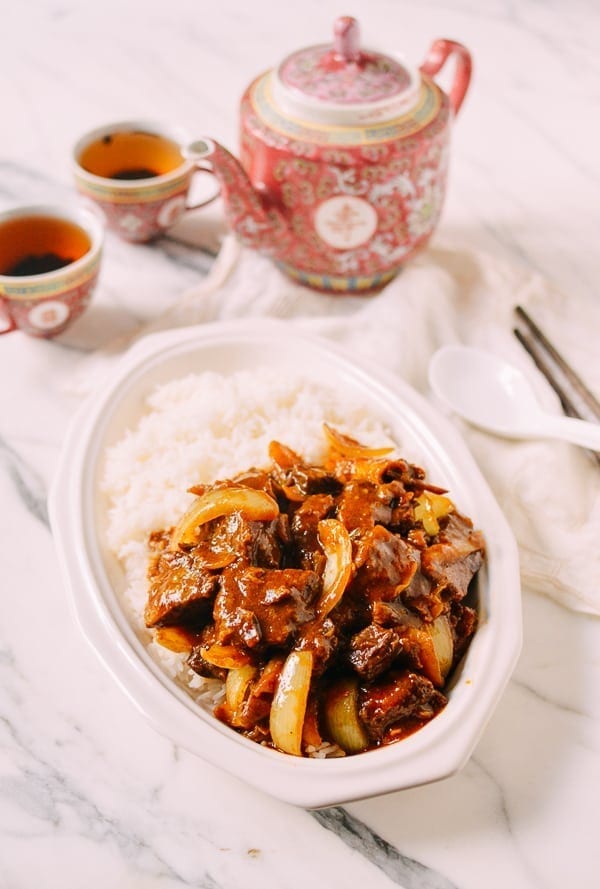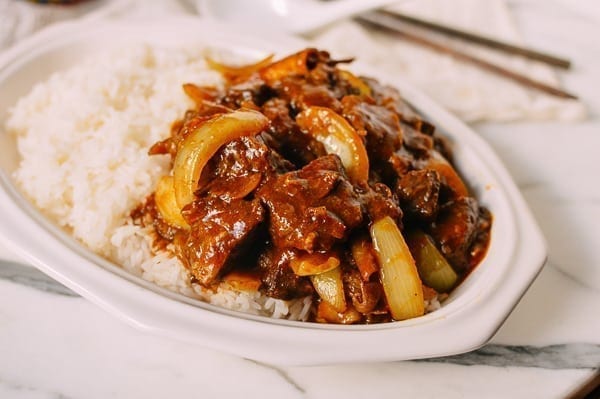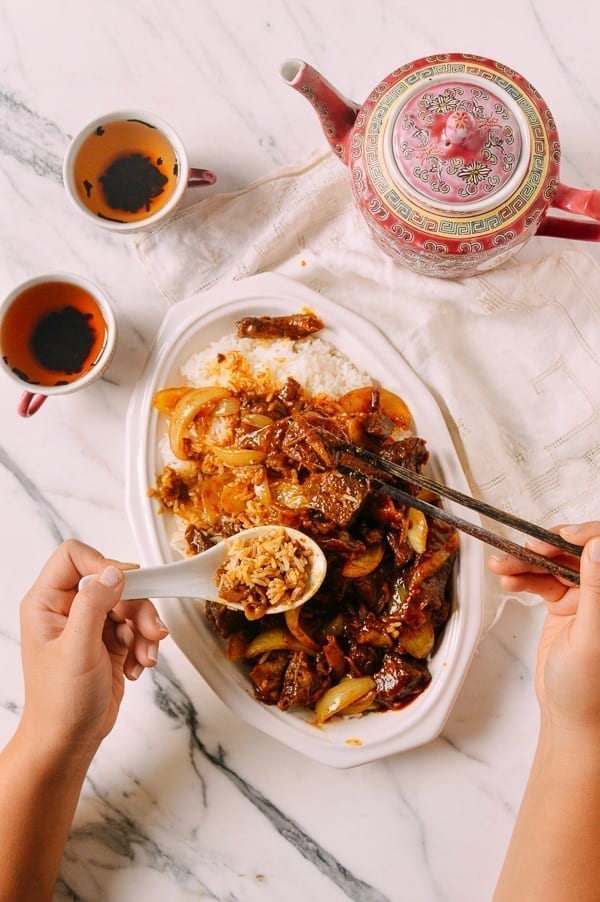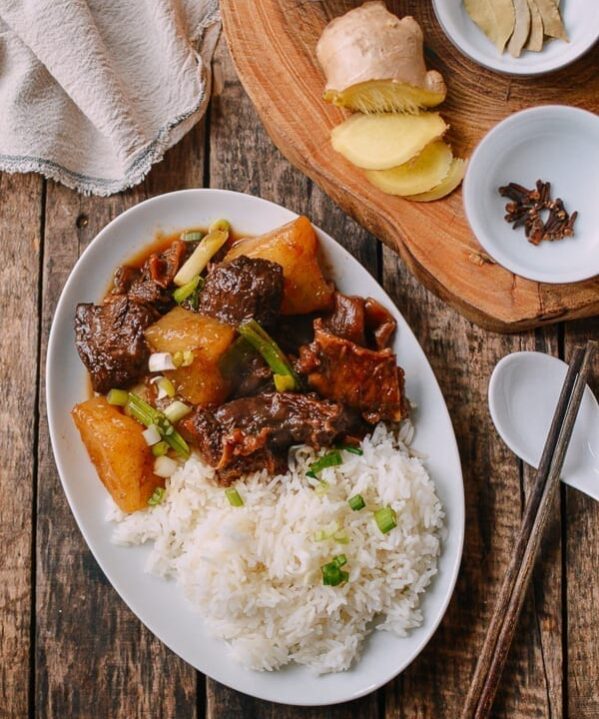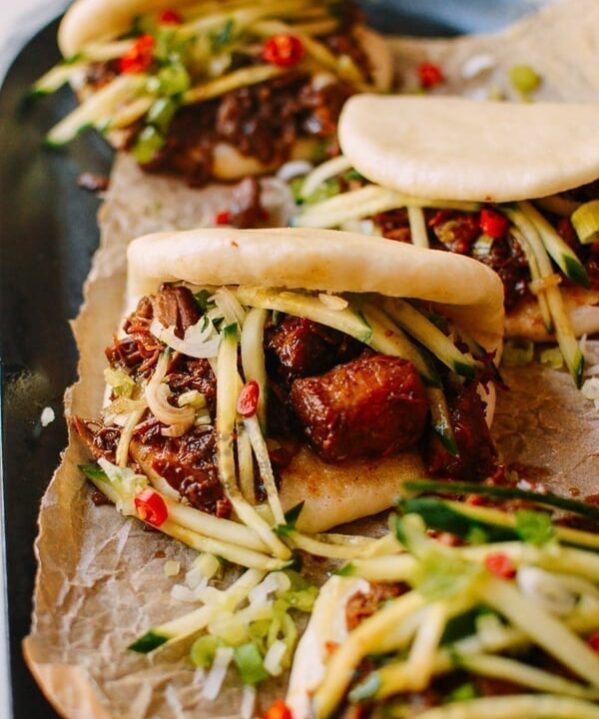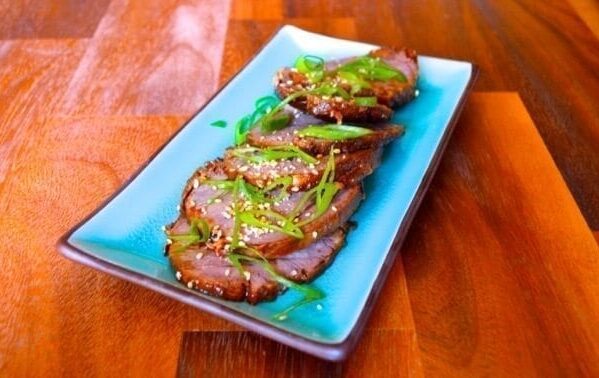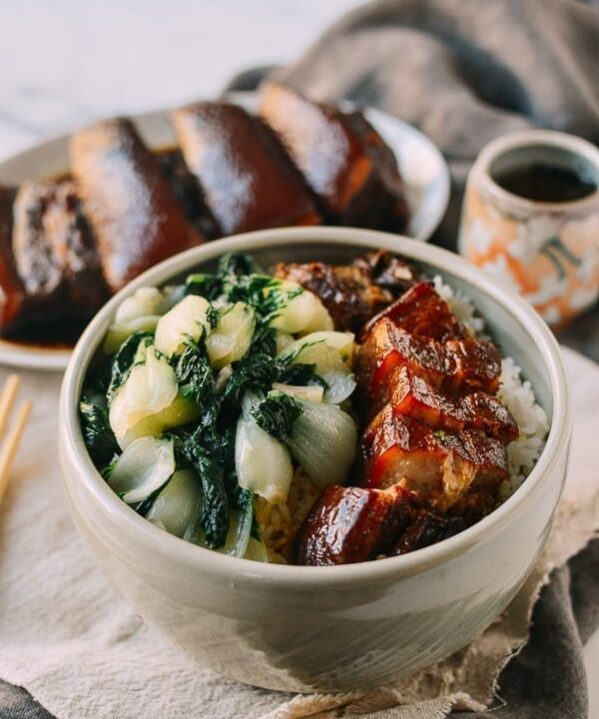This Instant Pot Braised Curry Beef Is. Life. I haven’t been more excited about a recipe in a long time.
The One Dish I Always Ordered
Growing up, we would make regular trips into New York City for family gatherings––weddings, birthday parties, holidays, and dim sum brunches. It was always a food-centric affair, with meals at Chinese restaurants in either Chinatown or Queens.
Not to be outdone by the gluttony of the day, however, we would inevitably stop at NY Noodletown on Bowery or JJ Noodle on Henry St. to pick up styrofoam containers bursting with takeout to take back home to Jersey.
Our regular orders included Thousand Year Old Egg Congee, Beef with Tofu, and Cantonese roast meats like roasted pork belly and char siu pork. But whatever we ordered, the ONE thing we ALWAYS got was the recipe I’m making today––braised curry beef over rice.
A “Rough” Cut of Meat!
Traditionally, this braised curry beef (咖喱牛腩) was made with a cut of meat unfamiliar to most Westerners. It’s called “rough flank” or “outside flank” in English and pronounced “ngau lam” in the Cantonese dialect.
Not to be confused with flank steak, outside flank is a very tough cut of meat that must be braised until tender. The cut is about an inch thick, with a thin layer of silver skin on top and lots of tendony, chewy, crunchy bits that are made soft from long braises. It’s used in many braised Chinese beef dishes, and the resulting texture is prized among Chinese diners.
Now while that may not sound totally appetizing to some Western ears, I’m here to tell you that braised beef rough flank is one of my absolute favorite things. When braised, the tendons in the beef become deliciously gelatinous and melt-in-your mouth, and the meat falls apart like the most tender brisket or pot roast.
A Disappearing Recipe
Unfortunately, traditional braised curry beef made with rough flank or outside flank is becoming more and more scarce in today’s Chinatowns. I ordered it at NY Noodletown very recently, and what I got was thinly sliced beef stir-fried in a thin curry sauce, rather than the rich, tender chunks of beef I was looking for.
So, I decided to take matters into my own hands and craft a recipe for this braised curry beef using my new favorite kitchen toy––the Instant Pot.
While it normally takes hours to braise this cut of meat on the stove to achieve the tenderness you’re looking for, the Instant Pot can do the same work in under an hour, which is honestly incredible. You can start cooking, and an hour later be enjoying the most tender meat and richly flavored sauce––all poured over piles of steamed rice.
My mom has a recipe for a Hong Kong style beef curry on the blog already, but I decided to create a version closer to what we used to have in Chinatown by omitting the potatoes and carrots, and adding crunchy stir-fried onions right at the end.
NOTE: If you can’t find rough flank or would rather not use it (not everyone is a fan of beef tendon, I get it), you can substitute beef chuck (regular stew meat) to make this curry beef. Just cut the amount of stock in the recipe to just ⅔ cup, and reduce the instant pot cooking time to 20 minutes, as chuck cooks much faster than rough flank.
ALSO: We have the largest size instant pot (8 qt.), and this curry beef recipe filled it about 2/3 of the way up. If you have a smaller instant pot, simply cut the recipe in half.
Instant Pot Curry Beef: Recipe Instructions
First, blanch the beef to get rid of any impurities. Add the chunks of beef to a wok full of cold water, and bring to a boil.
You’ll start to see the meat cook. Boil for 1 minute.
Soon after, you’ll see foam appearing at the top of the water. These are the impurities you’re trying to get rid of.
Boiling these impurities out of the beef with this quick blanching process will give you a more pure flavor in the final curry, and a clean sauce.
Drain immediately, rinse, and set aside.
Heat ¼ cup of oil in the Instant Pot on the sauté setting. Add the garlic, shallots, and bay leaves to infuse the oil. Cook for a few minutes. Then add the curry powder and turmeric powder. Stir until well-combined. If need be, add a little bit more oil so the curry powder doesn’t stick to the bottom of the pot. Take care not to burn the spices!
After a minute, add in the beef, beef or chicken broth or water (reduce the amount of liquid here to ⅔ cup if using beef chuck instead of outside flank), sugar, salt, and tomato paste. Seal the Instant Pot, and turn on the meat stew setting for 45 minutes (reduce cooking time to 30 minutes if using beef chuck).
Meanwhile, sauté the onions in 1 tablespoon oil in your wok for 1-2 minutes. They should still be a bit crunchy. Set aside.
Release pressure completely from the Instant Pot using natural release.
When safe, open the lid of the Instant Pot, and turn on the sauté setting. Stir in cornstarch slurry, and allow the curry beef sauce to thicken for a couple minutes.
If the curry beef isn’t thick enough for your liking, make and add more cornstarch slurry accordingly.
After the sauce has thickened, stir in the sautéed onions.
Taste for seasoning and add salt to taste.
Serve your braised curry beef over rice.
Instant Pot Braised Curry Beef
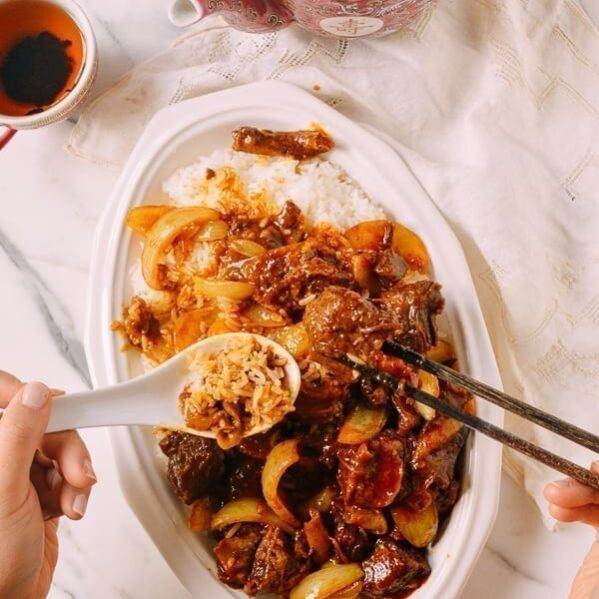
Ingredients
- 3 1/2 pounds beef outside flank/rough flank (牛腩, can also substitute beef brisket or chuck, cut into large 2-inch cubes)
- ¼ cup vegetable oil (plus 1 tablespoon, divided)
- 5 cloves garlic (chopped)
- 5 shallots (finely chopped)
- 3 bay leaves
- ⅓ cup curry powder
- 1 teaspoon turmeric powder
- 2 cups beef broth (chicken broth or water)
- 4 teaspoons sugar
- 1 tablespoon salt (plus more to taste)
- 2 tablespoons tomato paste
- 2 large onions (cut into wedges)
- 2 teaspoons cornstarch (dissolved in 1 tablespoon water)
Instructions
- First, blanch the beef to get rid of any impurities. Add the chunks of beef to a wok full of cold water, and bring to a boil. Boil for 1 minute, drain, rinse, and set aside.
- Heat ¼ cup of oil in the Instant Pot on the sauté setting. Add the garlic, shallots, and bay leaves to infuse the oil. Cook for a few minutes. Then add the curry powder and turmeric. Stir until well-combined. If need be, add a little bit more oil so the curry powder doesn’t stick to the bottom of the pot. Take care not to burn the spices!
- After a minute, add in the beef, broth or water (reduce the amount of liquid here to ⅔ cup if using beef chuck instead of outside flank), sugar, salt, and tomato paste. Seal the Instant Pot, and turn on the meat stew setting for 45 minutes (reduce cooking time to 30 minutes if using beef chuck).
- Meanwhile, sauté the onions in 1 tablespoon oil in your wok for 1-2 minutes. They should still be a bit crunchy. Set aside. Release pressure completely from the Instant Pot using natural release.
- When safe, open the lid of the Instant Pot, and turn on the sauté setting. Stir in cornstarch slurry, and allow the sauce to thicken for a couple minutes. If the curry isn’t thick enough for your liking, make and add more cornstarch slurry accordingly. After the sauce has thickened, stir in the sautéed onions. Taste for seasoning and add salt to taste. Serve over rice.
nutrition facts
